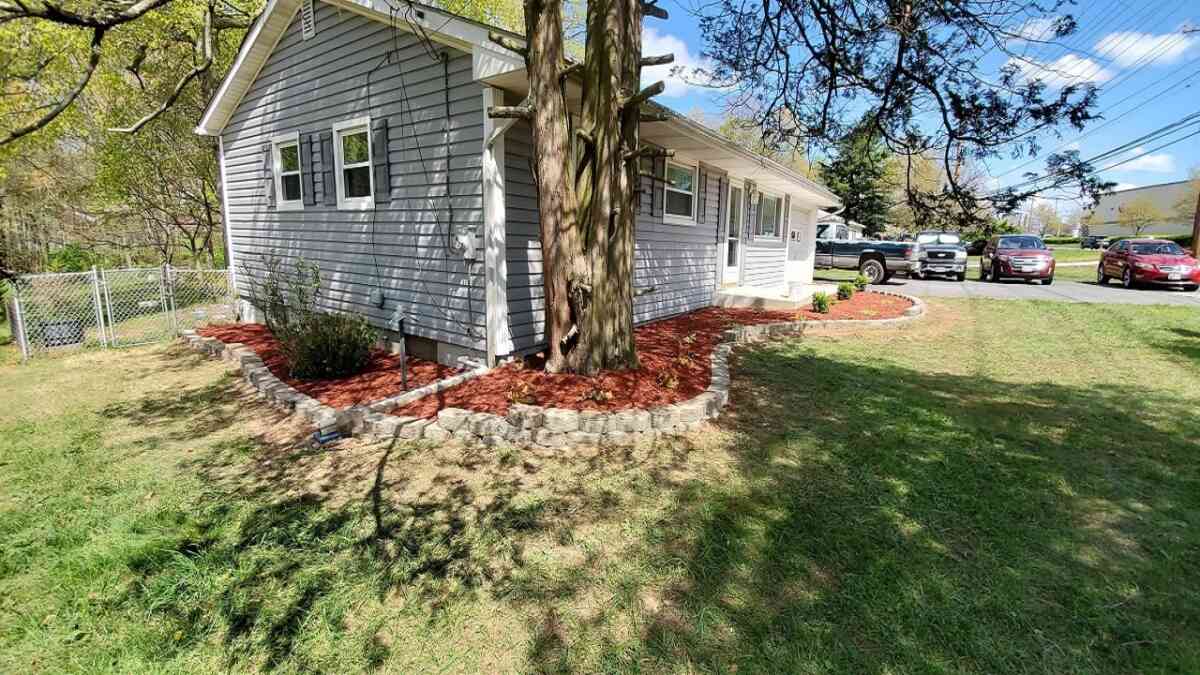Should You Remove Old Mulch?
Reusing old mulch in landscaping is a fantastic way to add nutrients to the soil and save money. The old mulch is usually made of wood materials, which can strip soils of nitrogen that is needed. It is possible to add compost or other fertilizer-rich materials to speed up the process. Read on for more information about the best ways to recycle old mulch for landscaping. Here are a few methods to recycle old mulch. We hope that you can find one that works for you.
Get rid of mulch that is diseased
You must first examine the mulch for indications of disease before you replace it. If you find any indications of disease, you should remove the old mulch and dispose of it correctly. If the mulch is simply mildewed, you may use it again. Remove any fungi present from the mulch and properly remove it. To dispose of it in a safe manner you should check with the city for the best disposal procedure. After you've disposed of it properly, you can recycle it with new mulch.
Wood mulch is harmful to your plants' nitrogen levels. Combining compost with wood mulch can help reduce the chance of developing plants with illnesses. The wood mulch could also be a source of microorganisms which can help speed up the process. Furthermore, this kind of mulch can improve the nitrogen ratio of the compost you have. Your plants will get access to the nitrogen in the soil.
Mixing compost
Many gardeners don't know what to do with their old mulch. It is not only costly however, it's also biodegradable. Why would you throw it away? And what about the compost? It is possible to recycle this biodegradable material! Mixing old mulch with compost can make it much easier for organic fertilizer (or other substances) to decompose faster. Additionally, it will help to protect your soil from winter's harsh conditions.
Another benefit of mulch is that it's able to be utilized throughout the year. It can be used around your plants, protect them from cold winter temperatures, and provide a home for earthworms. It slowly adds organic matter into the soil, enhancing its physical qualities. It is recommended to remove the mulch from young plants in the spring to let them get sunlight and warm up the soil. However, if you have plants that will bloom during the summer it is possible to leave the mulch on the plants.
Mixing mulch with compost is a good idea if you plan to reuse it to create landscaping. It's not recommended to bury it directly in your soil - it can easily be carried off by wind or rough weather. But if it's still usable in the spring then you don't need to worry about it rotting. It'll be a great resource the next spring!
Make use of old mulch for soil amendment
Mixing compost with other soil amendments is a fantastic method of recycling it. Wood chips are the best mulch to plant trees. They retain water slowly and can lower the temperature of soil. However, old mulch can also be blown away due to wind or storms. This can lead to an unsanitary situation. If you don't want to deal with that you should stay clear of old mulch.
Perhaps you are a novice to gardening and are wondering whether you should utilize the older mulch. In contrast to other essentials for gardening mulch has a more extended shelf time. Mulch is a great way to improve the soil of a plant and protect it from elements, manage weeds and serve as a slow-release fertilizer. It's also biodegradable. If you decide to use it to amend your soil or to create a barrier against weeds, it can provide many benefits.
Recycling old mulch
Recycling old mulch into landscaping can be a cost-effective method to safeguard your soil and save money. It is crucial to ensure you are safe when working with old mulch. Wooden mulch can be quickly consumed by certain kinds of wood because they are rich in nitrogen. If you choose to reuse your old mulch, make certain to mix it with organic matter or compost to increase the soil's quality. If possible, you should use wood chips in place of mulch as they hold water more slowly and can be more effective in slowing down the temperature of soil.
Conclusion
Create a small hole in the mulch, and then rake it out to get rid of any small clumps. Then, apply new mulch. It is important to apply it at a depth of 3-4 inches. This is crucial for optimal performance. To ensure that the new mulch won't ruin your gardens, put the mulch you have used on a sheet to keep it from staining.

